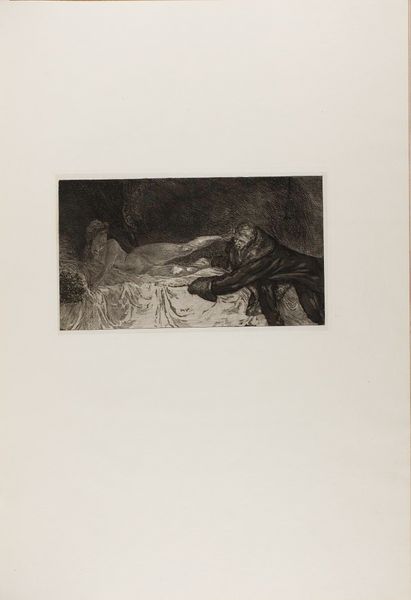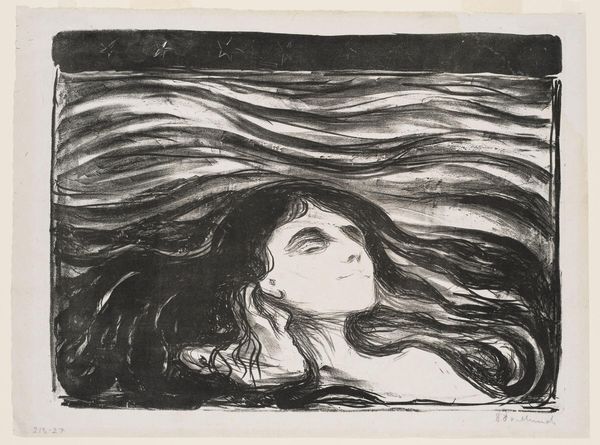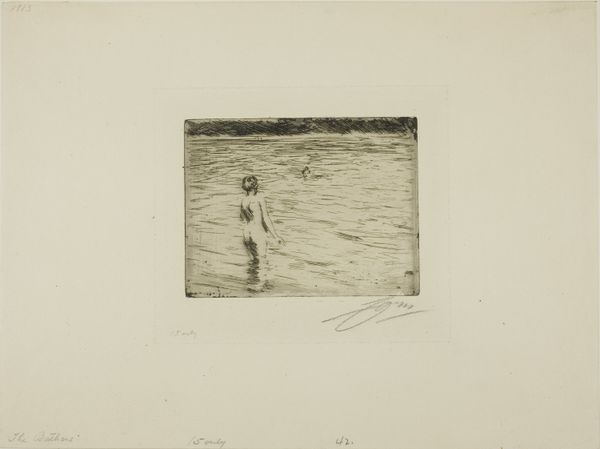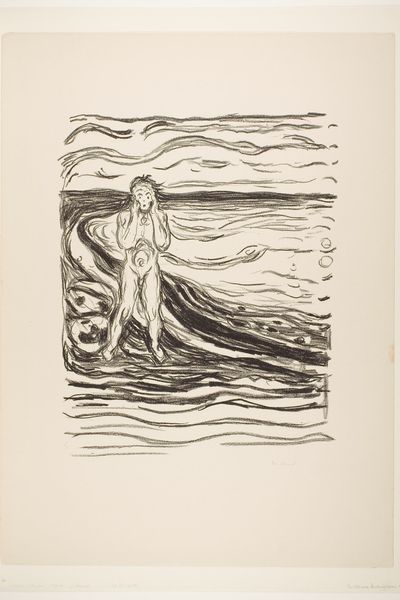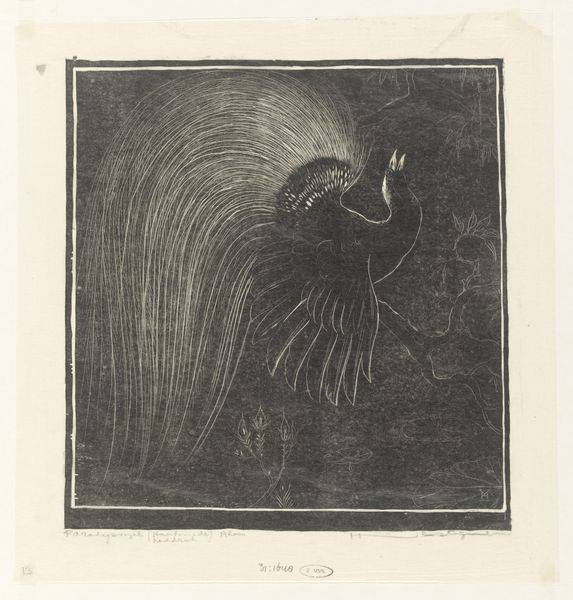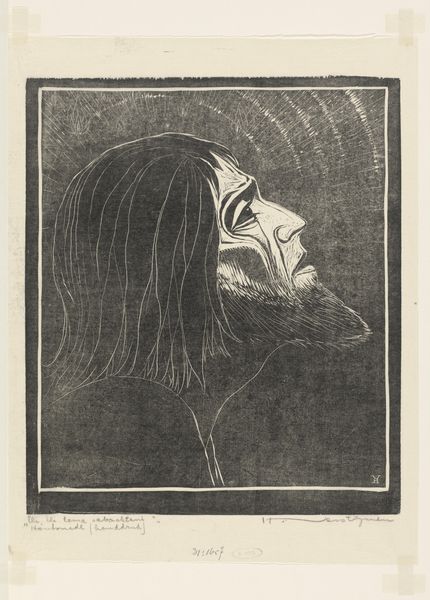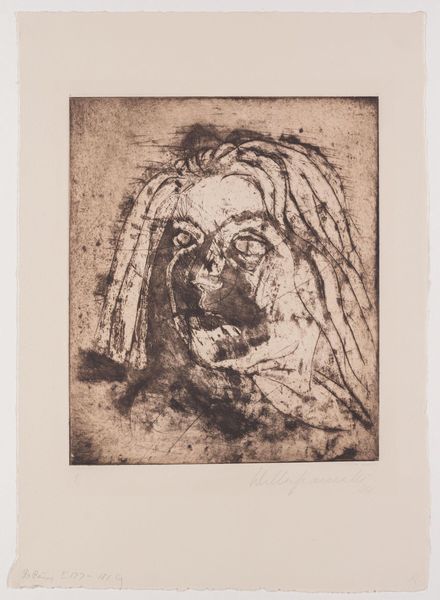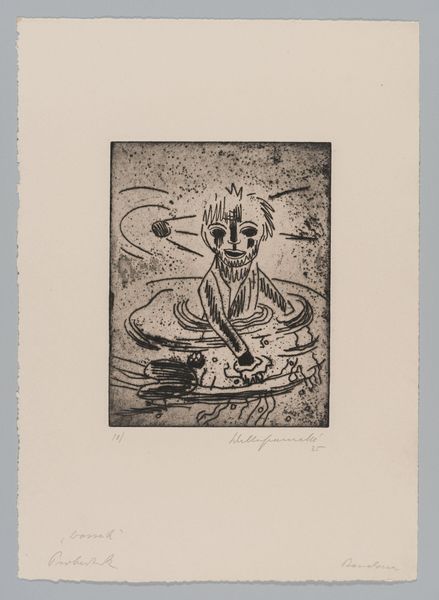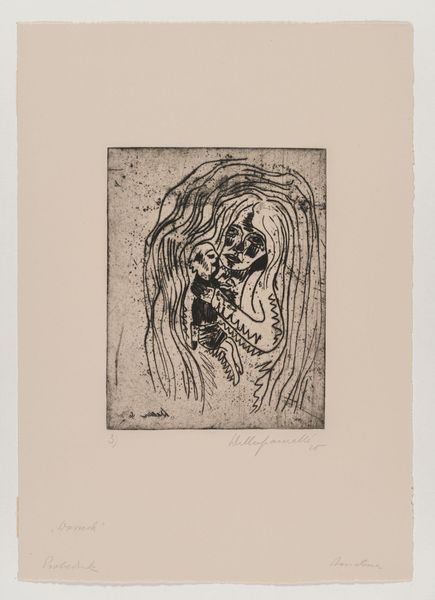
drawing, print, etching, paper, charcoal
#
portrait
#
drawing
# print
#
etching
#
charcoal drawing
#
paper
#
symbolism
#
charcoal
#
charcoal
#
nude
Dimensions: 221 × 290 mm (plate); 348 × 508 mm (sheet)
Copyright: Public Domain
Curator: Here we have Edvard Munch’s "On the Waves of Love," created in 1896. It's a charcoal and etching print on paper, currently residing at the Art Institute of Chicago. Editor: What immediately strikes me is the almost dreamlike quality evoked by the blurring of the figure with the waves. The tonal range is limited, which concentrates my focus on the sinuous line work depicting the water. Curator: It’s fascinating to consider this print in light of Munch’s broader interest in psychological landscapes. Notice how the female figure is partially submerged, merging with the undulating lines that represent the water. This merging visually suggests a symbolic dissolving of boundaries between self and emotion. The title tells us this has something to do with ‘Love’. Editor: Exactly, that fluidity mirrors, perhaps, the intoxicating, all-consuming nature of passionate emotion. I see how the reductive approach simplifies form to pure linear expression and enhances this feeling of being overwhelmed, of almost drowning in the emotion. Curator: Consider, too, that the print medium itself makes this artwork more widely available. Munch, exhibiting often in Berlin in the 1890s, would likely have encountered an audience keen to receive artworks probing deeply into psychic and existential issues. So, beyond an exploration of aesthetics, it’s about making a statement to this segment of the population through the circulation of his printed image. Editor: The way the lines coalesce to form a semi-nude figure with a distinct curve of her neck... there's a subtle erotic charge. Even the gentle curve and the soft modelling suggest more carnal intent than some tragic fate. Curator: I find your focus revealing about modern aesthetic taste! I can appreciate how one might respond, and also think the turn-of-the-century viewer might equally see her drowning, literally, or emotionally, in love’s tidal forces. Perhaps Munch seeks a tension between both sensations: terror and delight, in how we encounter this force in the world. Editor: That ambivalence gives this composition real power. The tension you note definitely intensifies the image; that's really thought-provoking! Curator: Precisely. It’s a powerful depiction of human emotion experienced not as individual, but also bound within a broader public conversation concerning the psychological depths and anxieties of modern life.
Comments
No comments
Be the first to comment and join the conversation on the ultimate creative platform.

